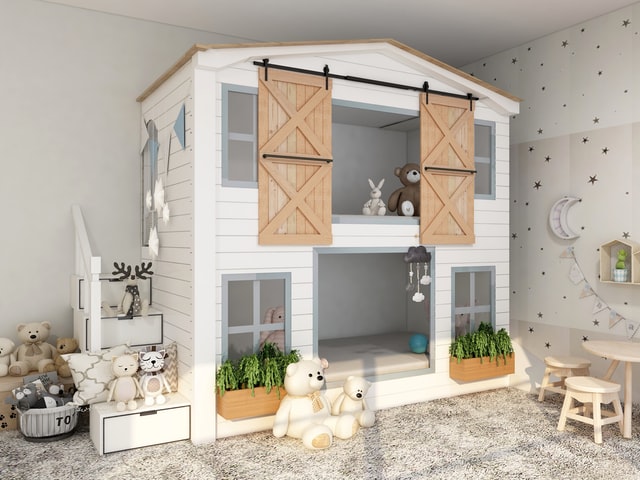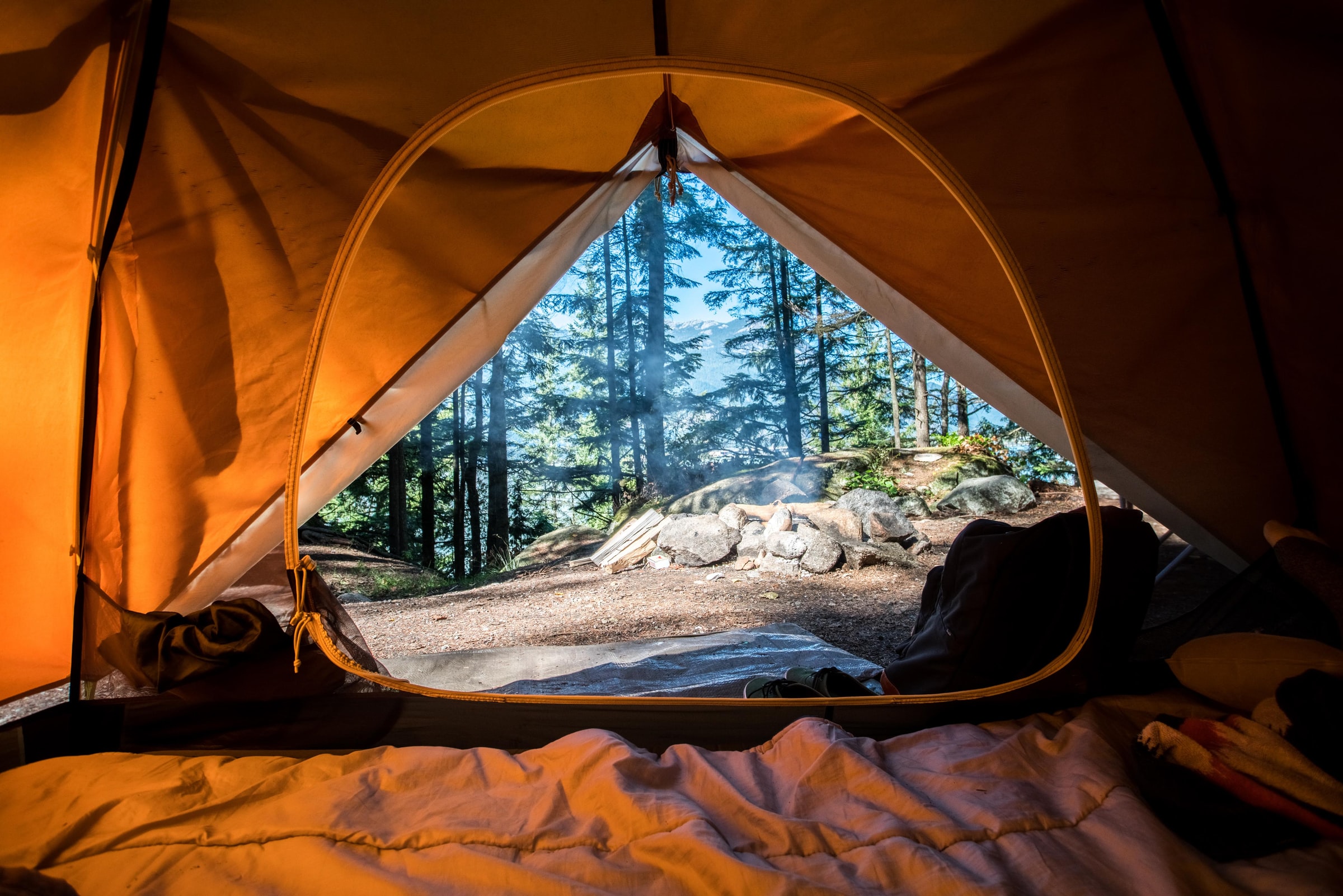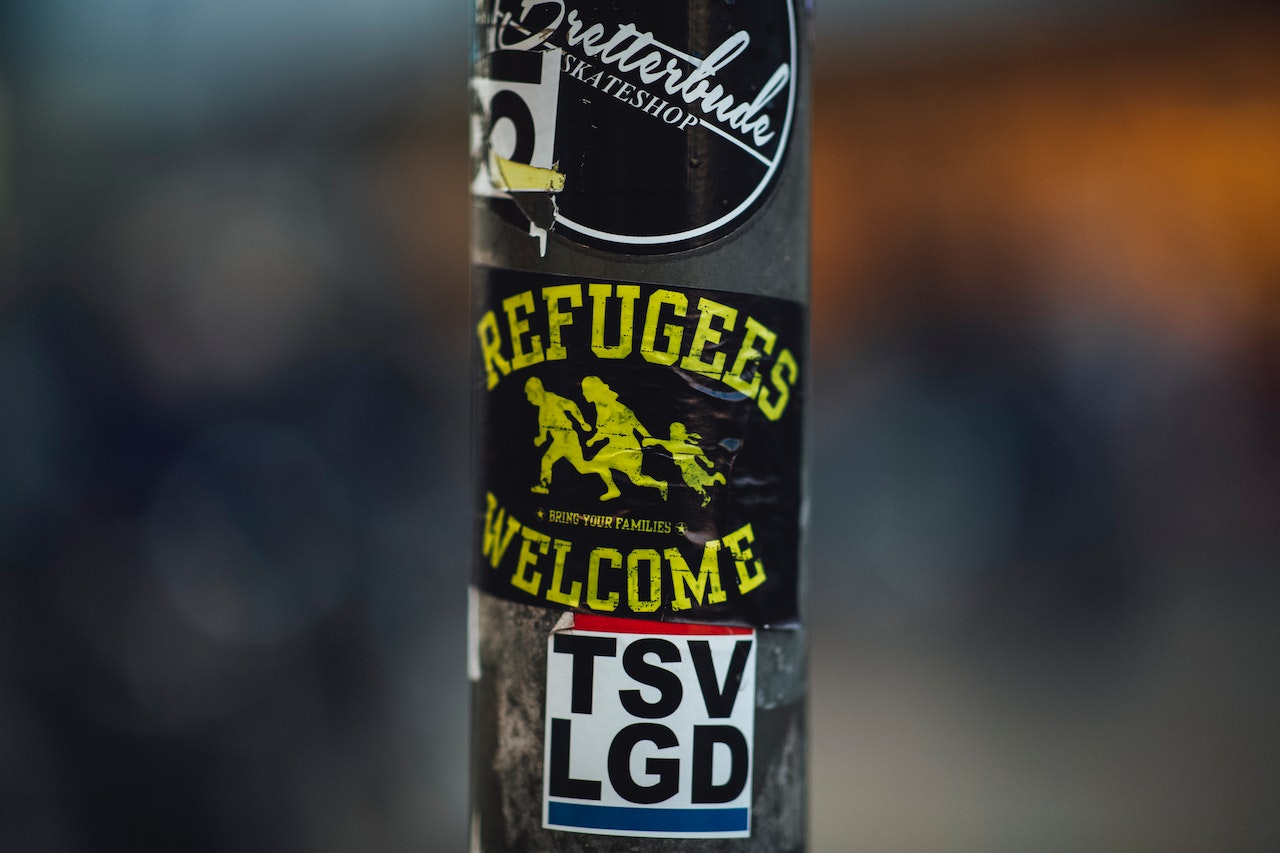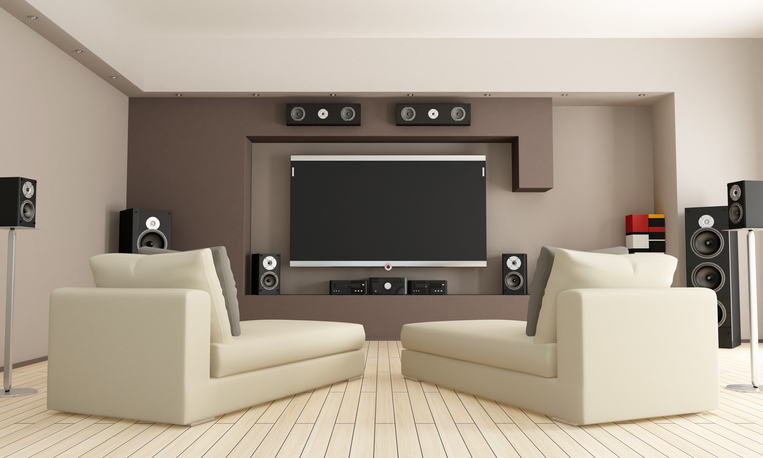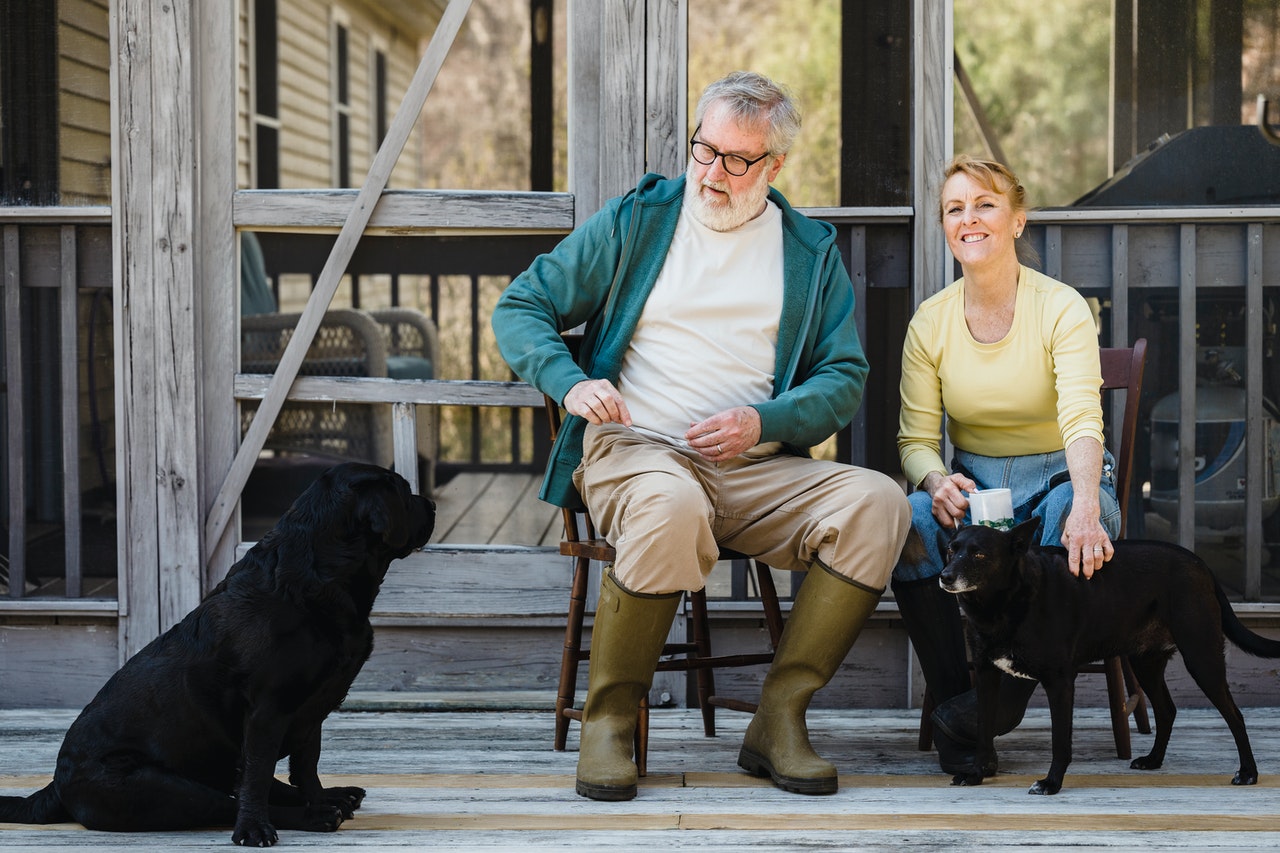Playing is more than just a way to have fun; it’s also an essential part of healthy childhood development. As parents, you can adapt any space at home and design a playroom where your kids can explore, get creative, and learn. When designing a playroom, it’s crucial to think about it from a kid’s perspective. Our guide shows you how to create a fun and functional kids’ room that your children will love for many years to come.
Brainstorming with Your Children
While you’ll have most of the say about the design of the playroom (after all, this is your home), it’s important to let your children provide some input before you set up their new playroom. Ask them about their favorite subjects in school and what type of things they’d like to have in the room. After they spend their day surrounded by school lockers, it is important that the playroom gives them some space for creativity. From furniture and toys to kids’ entertainment, sit down and write out a list of all the most important things to your child. When you brainstorm together, you’ll ensure that the final result is something you and your kids will both enjoy and appreciate. Make sure you design a space that’s “evergreen” and one that will grow and adapt as your child gets older. This is the best way to make the most of the playroom and keep it functional and useful over the years as they develop and mature.
Pick a Theme
Choosing a theme for your new playroom can make it fun and exciting, but keep in mind that certain themes might not be appealing to your child in a year or two. Try to stick with themes centered around their favorite activities rather than characters from movies or TV shows. Here are some tips to help you develop the perfect theme for your child’s playroom:
Theater / Dance
Add a small stage to the room where your children can practice their acting and dancing skills. Stock the room with various costumes so the kids can play dress-up and do a little bit of theater right at home. If your child likes to dance, install a large mirror on one wall of the room. Bring in a stereo system or a record player so they can enjoy their favorite plays and dance to music.
Music
Fill the playroom with various instruments like a small drum set, a keyboard, and a tambourine. Stock your child’s playroom with sheet music if they’re skilled at playing the piano or other instruments, so they always have something new to learn. Display some music-themed décor in the room like oversized music notes, framed sheet music, or artwork of images like people or animals singing and playing instruments.
Art
Set up a roomy, sturdy craft table where your child can paint, draw, and work on a variety of arts and crafts projects. Stock the playroom with watercolor and finger paints, an easel, paint brushes, scissors, glue, and construction paper. Find a place where your kids can display their art, such as a large bulletin board or a magnetic board for easy hanging.
Sports
Decorate the room with items that display your child’s favorite sports like a framed picture of a baseball field, a hockey stick hung on the wall, or a picture of their favorite player. If you’re feeling brave, install a ceiling-mounted cargo climbing net so your child can play and let off some steam indoors. Bring in some books about sports so your child can read about their favorite games and expand their mind whenever they’re not on the playing field.
Game Room
From cards to board games, you can easily make your child’s playroom a fun game room by stocking it with a variety of games geared for their age group, building blocks are a great option. Paint a tabletop in a checkerboard design so the kids can play a game of checkers or chess anytime they want. If you have space (and the budget), bring in a large game like a foosball table or ping pong table to serve as the room’s focal point.
Furniture
Once you’ve chosen a theme, it’s time to pick out some furniture for your kid’s playroom. Here are a few tips to help you get started and ensure that this room is functional and fun to use:
Stick with neutral furniture that’s not too loud or colorful. The more neutral the furniture is, the better the odds are that your child will grow with it instead of out of it.
Choose furniture that’s durable and easy to clean and aim for multifunctional furniture that includes storage like an ottoman or storage bench.
It’s important to ensure that the entire family feels welcome in this room. While kid’s furniture is excellent for little ones, consider bringing in a full-size couch and table so your older children and the adults will feel comfortable in this space, too. If you want to get them their own special chair to relax in which fits with the general aesthetic and doesn’t look too ‘childish’, consider a relaxing recliner or a super comfortable futon.
To add a pop of color, bring in some rugs, curtains, and décor to fill the room with bright and cheerful hues. Leave the wall color neutral so it’s easy to adapt the room as your child grows.
Play tables are essential to your playroom. They should be made out of a resistant material such as hardwood. Pick one which has a double-sided white melamine tabletop. meaning, white on two sides. The white top allows for super clean, super cool play with Puzzles, Wooden Blocks, arts and crafts
Make sure that this space has flooring that’s easy to clean and maintain. Linoleum and vinyl are both good options, and they don’t require a lot of maintenance to keep them looking new. Protect the floors (and your child’s knees and elbows) with some soft, machine-washable area rugs.
Choose Fabrics that are Easy to Clean
When choosing furniture, curtains, and rugs for your home playroom, look for items made with fabrics that are easy to keep clean. These fabrics are your best bets:
Microfiber. This soft, stain-resistant fabric is perfect for furniture. Look for microfiber in a variety of textures, including a suede-like feel or a thicker version that feels like corduroy. Microfiber is easy to spot-clean with a cloth and some warm water. You can also find solvents that are specially designed for this type of fabric to remove more stubborn stains.
Wool. Thanks to its softness and durability, wool is a great fabric choice for a playroom. You can find wool furniture and rugs, and it’s super resilient under heavy foot traffic. Wool is less apt to snag or pill, and it won’t wrinkle. Just spot-clean your wool fabrics, or use a small vacuum to get rid of crumbs and dust.
Leather. Believe it or not, leather is an excellent choice for a playroom, thanks to its slick surface and natural grain that give it the ability to hide scratches and stains. Apply a leather conditioner twice per year to keep your kids’ leather furniture soft and supple. Since leather isn’t porous, you can easily wipe up spills with a cloth or paper towel.
Vinyl. This material looks similar to leather but costs a lot less. You can clean your vinyl furniture by spraying it with a bit of water and gently wiping spills off. Make vinyl chairs and sofas softer and comfier by adding some throw blankets and pillows.
Storage Space
Your child must have fun in their playroom, but it’s also important that this part of your home stays clean and organized. This space must be free of clutter, so your child will learn to be organized and responsible. With the right storage, you can keep everything neat, tidy, and in its place.
Use Mason jars with a lid to store and organize small craft items like buttons, beads, and spools of thread. Cubbies are perfect for larger toys and games, and you can easily put them on a shelf or stash them under furniture. Baskets and storage bins work well as a catch-all to toss stuffed animals and other toys in one place. Add a storage bench or ottoman, so the kids have a place to hide their shoes, board games, wooden toys, and other medium-sized items. Make sure your playroom has at least one bookshelf for reading material, sheet music, or art supplies.
Set up Different Zones
To make the most of your playroom, break it up into different zones. Each zone can be designated for a variety of activities your child enjoys. Put a small desk in one corner of the room for homework, and place shelving with art supplies and a craft table on the opposite side. Keep kid’s toys, games, and accessories in constant rotation so that there’s always something new for them to enjoy. As your child begins to outgrow certain items, donate them to a local nonprofit organization or your school. Make sure there is one part of the playroom designated for home use, such as a spot for a comfy sofa and TV set.
Add a Workstation
If you work from home or want your child to do schoolwork in the playroom, try these tips to integrate a workstation into the space:
Choose smaller desks. A desk that folds down from the wall is perfect for young children to do their homework, draw, or color. If you have an older child, look for writing or computer desks that have a slim profile but a bigger work surface.
Use a comfortable chair. If you’re dedicating a workstation in the playroom, make sure you include a comfortable, supportive desk chair. Try a chair with wheels and adjustable features that adapt to your child and help them maintain good posture while they work.
Don’t forget the lighting. Use a table lamp so it’s easier to see while sitting at the desk or computer. Lamps with a dimmer feature are ideal since you can change the brightness level to your liking.
Add shelves. Incorporate a lovely bookcase or wall shelving so there’s a place for you or your child to keep the supplies you need at the workstation. This will ensure that the room stays tidy and it makes it easier to access the important things you need faster.
Get Creative
You can bring many fantastic add-ons into the playroom to make it more functional and fun to use. Here are some inspirational ideas and activities to help you get started:
Add a swing. Hang a swing from the ceiling of the playroom so your child can swing as they listen to music or watch television. Make sure the swing is anchored securely and that you’re always nearby whenever they use it.
Add a nap station. Naptime is particularly important for younger children, so create a “nap zone” with a comfy mat, cot, or sleeping bag along with a blanket and some pillows so they can take a snooze after playtime.
Add a home play gym. A home play gym is a great add on if you have the space for it. Home playgrounds are great for every kid so they can play and exercise at the convenience and safety of their own homes.
Create a dress-up corner. Use a rack to hang costumes and accessories in the playroom and add a freestanding mirror in the corner of the room so your kids can have fun playing dress-up.
Add a slide. Bring a sturdy, small slide into the playroom for your younger children. If you really want to go all out, install a tube-style slide that will whisk your child from one floor to the next for a great entrance.
Create a chalkboard wall. Paint one wall with black chalkboard paint so your child can sketch and doodle to their heart’s content. If you’re not keen on painting a wall this way, bring in a large freestanding chalkboard and place it against one wall.
Make a slime station. Playing with slime is lots of fun, but it’s also messy. Make a special “slime station” with all of the supplies so your child can have some slimy fun, and then put everything away when they’re done.
Add a Space for Pets
If you have a furry or feathered friend, designate a special place for them in your child’s playroom. Here are a few tips to try out if you want to include your beloved pet in the fun:
Add a pet bed. Place a soft pet bed in a corner of the playroom where your dog or cat can snooze. They’ll feel included and content in this area, and it gives them a specific place where they can rest and nap.
Try a crate. If your pet is crate-trained, bring the crate into the playroom. You can also make or buy a calming crate and add a soft memory foam pad to the bottom so your pet will be comfortable. Leave the crate open or closed, depending on how you want to handle your pet’s behavior in the room.
Don’t forget food and water. Odds are that your pet will enjoy spending time in this room if there’s easy access to food and water. Use a pet-food mat to protect the floor, and bring in a bowl of food and water for them to enjoy.
Set some rules. Make sure your child understands how to deal with the family pet in their playroom. Let them know to leave the door open so that your pet can roam freely. Set a few ground rules regarding your pet so that everyone understands how to make sure they’re safe and happy.
Make it a Family Room That’s Not Just for Kids
The playroom can double as the family room, which means you and your partner can relax while the kids play nearby, and you can all watch movies or play games together. It’s easy to make it more of a family room than a playroom:
Add a sofa. A comfy sectional or sofa is essential for a family room/playroom. Make sure that there’s space for everyone in the family to have a spot for movie night. Look for sofas that have easy-care fabric upholstery and extra features like a center console for drinks or a built-in recliner.
Decorate with the family in mind. Add some fun décor to this room that the entire family will appreciate. Rather than using wall decals or kid’s movie posters, hang up some vibrant artwork that’s appealing to all ages.
Electronics Worth Adding for a Family Space
If you’re designing this room with the whole family in mind, don’t forget a few important electronics:
TV set. If you’re planning to make this space a family room, you can’t forget the TV. Just make sure that the kids understand the rules when it comes to watching TV and that it has to stay off while they do their homework or during reading or quiet time. Choose a flat-screen TV for this room that you can mount on the wall to maximize floor space. The TV should be a reasonable size, but not so large that it overtakes the room.
Sound system. A nice wireless sound system is a great way to enjoy movies with crisp, realistic sound. These electronics are also tons of fun for karaoke or listening to an audiobook or podcast.
Game system. If the family loves video games, install a great gaming system. Decide on a favorite system that everyone will enjoy, and be sure to include plenty of controllers so you can play together as a family.
Dimmable lighting. Look for lighting you can use with a dimmer switch so you can make the room as bright or as dim as you need to, depending on the activity or time of day.
Fan or air purifier. Keep the air circulating nicely with a quality ceiling or floor fan. An air purifier is also a great way to ensure that your family room smells fresh and that the air is clean and free of allergens and contaminants.
You don’t have to spend a fortune to design a fun, functional kid’s playroom. There are plenty of ways to DIY and get creative by using items you already have lying around your home. The key is to make sure that you’re having fun while you plan and decorate the playroom. Use these kid’s playroom ideas as inspiration to help you create the perfect space. When it’s finished, everyone will want to come over and play at your house.
